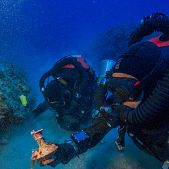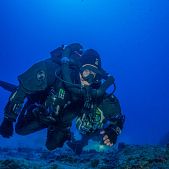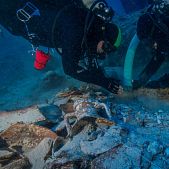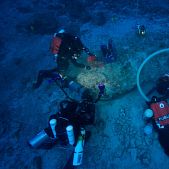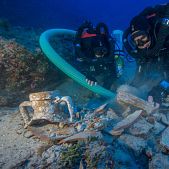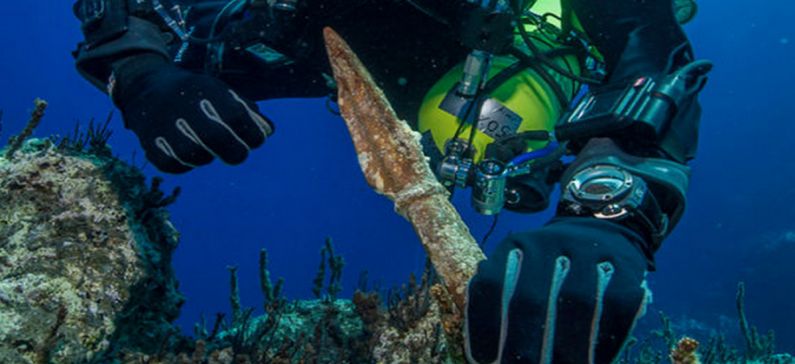
Over 50 new findings in the Antikythera Shipwreck
This year research period in the Antikythera Shipwreck by the Department of Underwater Antiquities, with the support of the American Woods Hole Oceanographic Institution began on August 26 and ended on September 16, giving for the first time the opportunity to excavated in the shipwreck with the physical presence of Greeks and submersible foreign archaeologists.
More than 50 objects were recovered during the 12 day long underwater expedition at the site.
On the wider area of the wreck, marine archaeologists pulled up, identified, labelled, and documented, among others, an intact amphora, a large anchor release ring – indicative of the size of the anchor for which it was intended – two nested lead anchor parts – the position of which indicates the direction the boat followed towards the seabed, a small four-sided stone “base” with 12 holes and of an undetermined mass, a small lagynos – a popular wine vessel – agglomerates and slag from iron and brass nails and other objects, lead sheets from the vessel’s leading etc.
Scientists say that the first systematic excavation taking place by Greek and foreign archaeologists is an arduous process that has to address the large depth of the wreck, the bad weather and an area which has searched many times in the past. Still, scientists believe the objects and data collected, along with the scheduled analyses on the materials will answer some of the important questions facing the wreck.
The survey is conducted under the direction of the Head of the Ephorate of Underwater Antiquities A. Simossi with scientific leaders in the field archaeologists Th. Theodoulos and D. Kourkoumeli and the American Woods Hole Oceanographic Institution’s (WHOI) marine archaeologist Brendan Foley.
The research team is also supported by additional Greek and foreign archaeologists, divers and technical divers, photographers, filmmakers, technicians, etc. (A. Tourtas, D. Conlin, R. O’Brian, P. Short, G. Smith, A. Sotiriou, N. Giannoulakis, B. Seymour, E. Kovacs, K. Kaizer, C. Fardoulis, M. Kelaidis , D. Romios, M. Tsimperopoulos, D. Manoliadi and G.. Bitsakis). The research is actively supported by the Swiss watchmaker Hublot, OTE Group, the American Foundation Sworsdpoint Foundation, Catherine Laskaridis Foundation, Costa Navarino, Municipality of Kythera and the community and residents of Antikythera.






